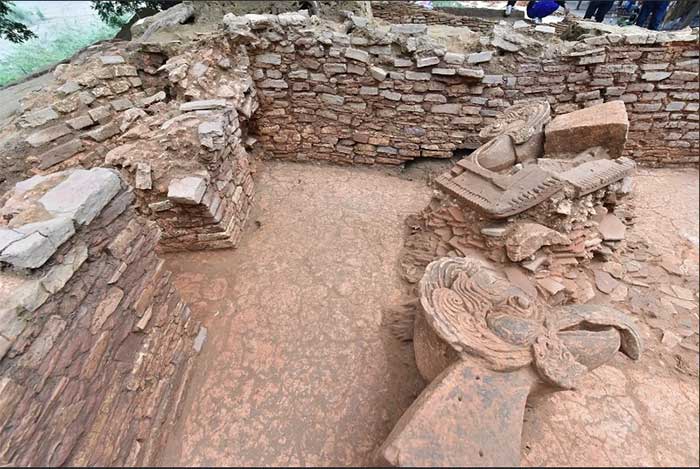New discoveries about the role of women in ancient Moche culture
Archaeologists in Peru have discovered important evidence, believed to indicate female rule in the ancient Moche culture more than 1,300 years ago at the Panamarca site, near the Pacific coast.
Among the remains are a stone throne and elaborate frescoes depicting unique scenes.
According to Jessica Ortiz - Project Research Director at the Panamarca archaeological site on the northwestern coast of Peru, these ancient frescoes "may indicate that this was a space used by a woman and that she may have been a ruler".

Panamarca archaeological site. (Source: Reuters).
Here, archaeologists also uncovered a room with pillars and a throne, surrounded by murals depicting the image of a powerful woman, associated with sea creatures and the image of a crescent moon.
This woman sits on a throne and receives guests. Evidence such as the presence of human hair and traces of wear on the throne indicate that this artifact was used regularly.
"The most interesting thing is the abrasion marks ," said excited archaeologist Jose Ochatoma. "No surface in this area is bare. Everything is meticulously painted and decorated with mythological scenes and figures."
Mr Ochatoma compared the room to the Vatican's Sistine Chapel, whose ceiling was painted with biblical images by Michelangelo. "This is a space where they recorded scenes from Moche ideology," he said.
Archaeologists believe the throne room dates back to the 7th century AD , when the Moche culture dominated the coastal valleys of northwestern Peru.
This is a civilization famous for its outstanding achievements in art, architecture and hydraulic engineering.
Not far from the throne room, the researchers discovered another room overlooking the plaza, which they called the Braided Serpent Room because of a fresco on the wall depicting a figure with twisted legs and snakes—a motif never seen before.
This room also contains several other murals depicting warriors, anthropomorphic weapons, and a monster chasing a man.
'We are discovering a symbolic system that has never been seen before in the pre-Hispanic world,' Ochatoma said .
Peru is a country rich in archaeological sites , many dating back thousands of years. It was once the cradle of the great Inca empire, which dominated the South American highlands until the Spanish conquest of the land in the 16th century.
According to the researchers, the new discovery not only provides deeper insight into the history of the Moche culture, but also opens up new directions in studying the role of women in ancient societies.
- Moche culture
- Excavating 1,000-year-old tomb of Moche civilization
- Journey to find her husband over hundreds of kilometers of ancient European women
- 6 interesting facts about ancient women that women themselves are surprised
- Strange story surrounding an ancient burial area
- The 3,000-year-old statue in Turkey reflects feminism
- Ancient capital Chan Chan (Pérou)
- What role did women play in ancient Rome?
- The role of women in science is increasing
- Exam written about women in science
- Discover the oldest 1200-year-old phone in the world
- The shocking truth in the ancient tomb was found in Poland
 Discovered an ancient centipede fossil 99 million years old
Discovered an ancient centipede fossil 99 million years old Discovered bat-like dinosaurs in China
Discovered bat-like dinosaurs in China Discovered a 200-year-old bronze cannon of the coast
Discovered a 200-year-old bronze cannon of the coast Discover 305 million-year-old spider fossils
Discover 305 million-year-old spider fossils